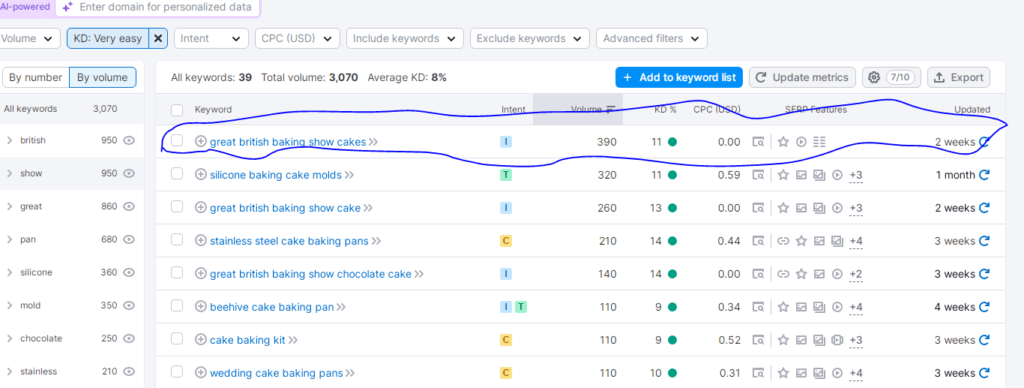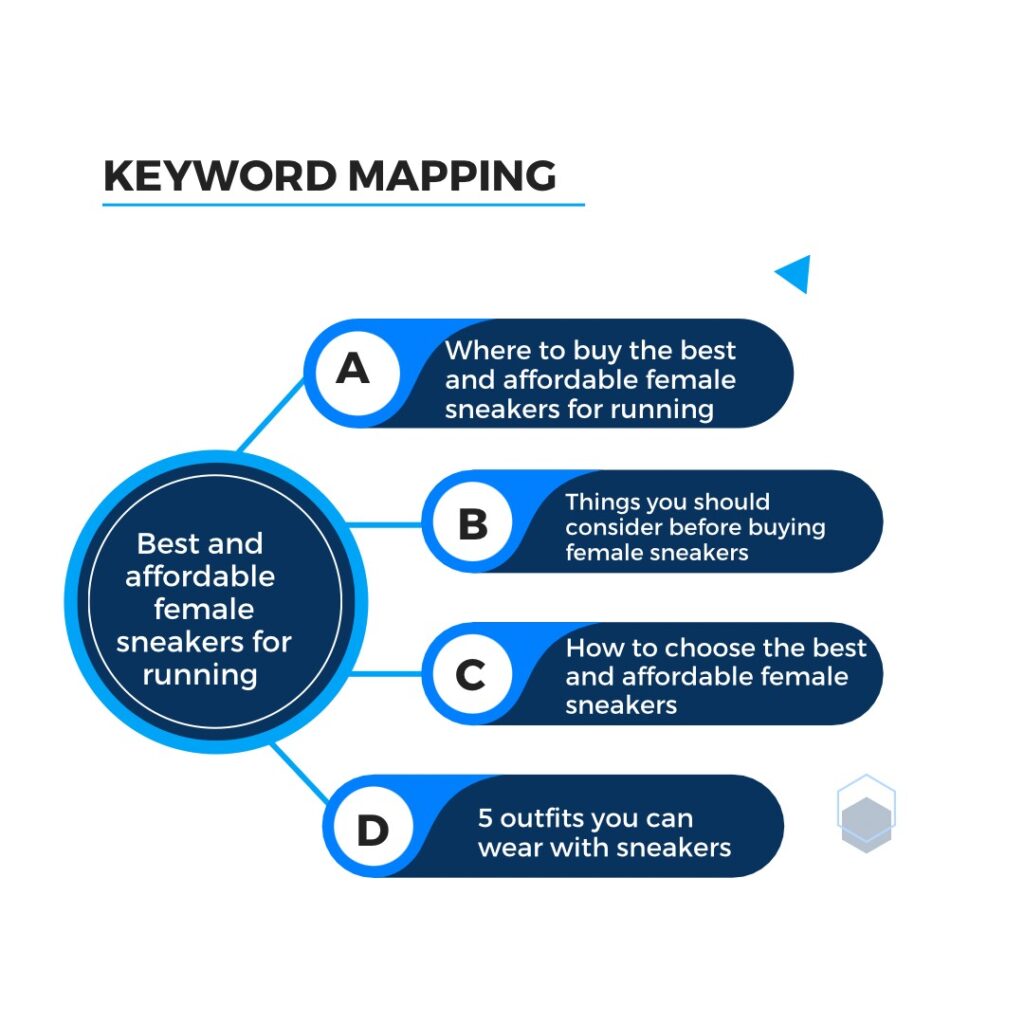What to do after Keyword Research: 5 Basic Steps
Many writers don’t know what to do after keyword research; they directly go into writing and publishing content without knowing there are specific steps to take for their content to rank and appear first in search engine results pages.
Keyword research and identification are some of the primary factors that will help you build a content structure for your blog or website, but it doesn’t just end there; there are other necessary SEO ranking factors to consider.
SEO and content ranking is a continuous process; one formula alone doesn’t guarantee your success, and you must apply multiple strategies to get results.
In carrying out your keyword research, ensure you complete the basis correctly by looking for the keyword volume, search intent, and keyword difficulty of the content you intend to write using Semrush or other keyword research tools.
Always remember that content that can be ranked on search engines has high search volume and low keyboard difficulty that match the user’s search intent ( informational, Navigational, Transactional and Commercial).
Once this is done correctly, you have passed the first checklist and are fully ready to move to the next step; this content will provide all you must do after conducting your keyword research.
5 Basic Steps you need to take after Keyword Research
1. Keyword Analysis
After conducting your keyword research, you don’t just go staight away to writing content; you need to undergo Keyword Analysis.
Keyword Analysis is discovering the structure and nature of the content/ keyword on the search engine result page (S.E.R.P.).
Once you’ve done your keyword research and gotten the focus keyword from which you intend to develop content, you need to look out for the first five website rankings for that keyword and study them thoroughly.

You aim to produce content that will appear on top of search engines, and to do that; you need to look at what your competitors have done and improve on them.

Doing keyword/ Content Analysis helps you to
- Determine what kind of content is currently ranking, whether a blog post, landing page or product page.
- Content component and composition:- This is to find out whether the content that is currently ranking at the top is made up of images, infographics, videos, audio recordings, pdf and other downloadables.
- Content-Length: The length of content has to do with the word count; you need to know if the content currently at the top was built around 500, 1,000 or 2,000 words
- Who is ranking: You need to know if the websites ranking are your major competitors, experts from your niche or other websites not in your industry.
- Backlinks detection: This will help you to know the number of backlinks they have that are making them rank.
- Search Traffic: The Source of their traffic.
Why do you need all this information? An idea of these will help you produce better and improved content; remember, to beat the best, you must be the best.
2. Keyword Mapping
Keyword Mapping is the next thing you need to do after Keyword/Content analysis.
Keyword mapping is strategically positioning your targeted keywords on the pages of your website to facilitate search engine ranking.
Keyword Mapping helps you optimize the structure and content of your website.
Keyword mapping aims to produce content with keywords matching user search intent. Google crawls your website, looking for pages with the keywords users search for.
Each page of your website should be optimized with only one keyword. Suppose Google finds out that multiple pages on your website have the same keyword with the same intent. In that case, it will lead to keyword cannibalization, affecting your website ranking.
You should be futuristic in your keyword mapping process and build topic clusters around your keyword.
Your content should contain pillar content and subtopics that are directly linked to your pillar content; this way, you can maintain authority.
For example, after conducting my keyword research, I want to write about “ Best and affordable female sneakers for jogging. “ The first thing I need to do after conducting my keyword analysis is to build a topic cluster around the focus keyword so I can rank for multiple keywords.

This topic cluster should be written separately and linked to the focus keyword.
Doing this increases the number of minutes users spend on your website, which is a significant factor in Google’s ranking.
3.Content Crafting
Content Crafting is the stage where you write your content to suit the user’s intention. In writing your content, always have them in various headings for easy explanation (H2, H3, H4, etc.)
Your content should have an introduction, a body and a conclusion.
Your introduction should briefly explain your content and capture the reader’s attention so they can read further.
Make your paragraph simple to read and avoid adding links within your introduction to avoid quickly capturing visitor attention from the content.
Always craft your content using SEO writing guidelines; include the focus keyword of the content in the first paragraph of your introduction and use it up to a maximum of four times in your entire content ( keyword density).
Remember, you already have someone ranking at the first position of the search engine result page (S.E.R.P.) for the focus keyword you are writing for. To beat them and appear at the top, you have to implement the 10X Content Strategy.
The 10X Content Strategy means
- Producing content that covers the topic more holistically than those written by your competitors.
- Providing up-to-date information about the topic being discussed
- Writing with Expertise, Experience, Authority U and Trust (E.E.A.T.)
- Being original, authentic and writing from a different perspective
- Having reputable Backlinks
- Having a good writing layout
- Adding captivating visuals ( Infographics, images, diagrams, videos, screenshots, etc.)
- Using self-made illustrations and images
- Making sure your content is readable and free from grammatical errors
- Writing in short and easy-to-read paragraphs
- Making use of navigational elements (Table of Contents)
- Writing in the required word count that explicitly explains everything about the content
Never make the mistake of using A.I. to write your content; when you do this, mainly as a newbie, your content will NEVER rank.

Here are the list of our Digital Services
4.Content/Keyword Optimization
No matter how well-written your content is, it might vanish into thin air if not well-optimized.
Studies have shown more than two million search results for a particular content, meaning your content has over 1/2000000 probability of appearing on search results.
You need to optimize it to ensure that you don’t stand a chance of your content not getting ranked.
Content optimization should be done during the editing phase, and you are to carry out the following tasks
- Include the focus keyword in your title, meta description, H1 tag, Image alt tags and URL
- Build quality Backlinks
- Make sure to use the focus keyword in your subheadings
- Make use of a table of content
- Make use of paragraphs and short sentences
- Have a maximum keyword density of four
You can optimize your content using an SEO plugin ( for a WordPress website or blog) or some content optimization software ( semrush, surfer SEO, etc.).
5.Content Tracking and Monitoring
After publishing your content, you shouldn’t just sit back and relax; you must track and monitor it to ensure it produces the desired results.
Metrics You Need to Track or Monitor:
Immediately after publishing your content, you need to track the following metrics.
1. Google Crawling/Indexing
Check if your content has been crawled and indexed by Google after publication; once it has been crawled and indexed, it will automatically show up on the result page.
Google takes some days to crawl and index your content, and once this is not done within the stipulated time frame, you are to resubmit your content through Google Console.
2. Keyword Ranking
Keyword ranking is the position that your content occupies on search engines. Once your content has been crawled and indexed, you are to track and monitor if it has appeared on the search and started ranking.
3. Organic Search Traffic
Organic search Traffic is the number of unpaid traffic searches from search engines to your website. When you start experiencing high Organic Search Traffic, it indicates that your content is performing exceptionally.
4. Impression
Impression is the number of times your content is displayed to online users, regardless of whether they click on it. The higher your impression, the higher your content stands a greater chance of being viewed by online users.
5. Organic Click-Through-Rate (C.T.R.)
C.T.R. is the percentage of online users who click on your result in the Search Engine Result Page (S.E.R.P.) compared to people who saw it.
To make your C.T.R. higher, always ensure your title tag and description are captivating and relevant to the user search queries.
6. Bounce Rate
Bounce Rate is the percentage of visitors you leave your website without spending much time. If you have a high bounce rate, your content isn’t captivating and relevant to the user.
All of these metrics can be tracked and monitored using Analytics Tools. There are a lot of these tools that can give you accurate tracking data about your content,
F.A.Q.
Is keyword research a skill?
Yes, keyword research is one of the search engine optimization skills you need to get your content ranked on search engines.
How long does it take to rank a keyword?
The time it takes for your keywords to rank varies; however, for new websites, it usually takes three to six months.
How will I rank for a keyword?
You can only rank for a keyword if
- It has a high search volume
- Low keyword density
- You produce content according to users’ intention
- You produce content that is 10X better than the one appearing at the top of S.E.R.P.
What steps do I have to take after keyword research?
After completing your keyword research, you are to perform these five basic steps
- Keyword Analysis
- Keyword mapping
- Content Crafting
- Content Optimization
- Content tracking and Monitoring
Final Thought
Keyword research, the first task you must carry out, ushers you to other tasks required for your content to rank high and appear in number one on search engine result pages (S.E.R.P.) if done correctly; it will help your SEO journey.
Furthermore, your success in search engine optimization is solely dependent on all of the other steps listed above, and paying attention to them may lead to the minimal performance of your content.
Therefore, before and after publishing your content, ensure you follow all the steps listed above. Once you’ve published your content, constantly update it to remain up-to-date and relevant to the audience’s immediate needs.


